- News
- Reviews
- Bikes
- Components
- Bar tape & grips
- Bottom brackets
- Brake & gear cables
- Brake & STI levers
- Brake pads & spares
- Brakes
- Cassettes & freewheels
- Chains
- Chainsets & chainrings
- Derailleurs - front
- Derailleurs - rear
- Forks
- Gear levers & shifters
- Groupsets
- Handlebars & extensions
- Headsets
- Hubs
- Inner tubes
- Pedals
- Quick releases & skewers
- Saddles
- Seatposts
- Stems
- Wheels
- Tyres
- Tubeless valves
- Accessories
- Accessories - misc
- Computer mounts
- Bags
- Bar ends
- Bike bags & cases
- Bottle cages
- Bottles
- Cameras
- Car racks
- Child seats
- Computers
- Glasses
- GPS units
- Helmets
- Lights - front
- Lights - rear
- Lights - sets
- Locks
- Mirrors
- Mudguards
- Racks
- Pumps & CO2 inflators
- Puncture kits
- Reflectives
- Smart watches
- Stands and racks
- Trailers
- Clothing
- Health, fitness and nutrition
- Tools and workshop
- Miscellaneous
- Buyers Guides
- Features
- Forum
- Recommends
- Podcast
£2,940.00
VERDICT:
Excellent bikepacking and touring machine that loves being loaded up and pointed at the wilderness
Hugely versatile
Lots of luggage options
Big tyre clearance
Almost custom fit
Paintwork is vulnerable under straps
Front end a bit harsh with smaller tyres
Bottom bracket feels low on more technical terrain
Weight:
11,550g
Contact:

This product has been selected to feature in road.cc recommends. That means it's not just scored well, but we think it stands out as special. Go to road.cc recommends
At road.cc every product is thoroughly tested for as long as it takes to get a proper insight into how well it works. Our reviewers are experienced cyclists that we trust to be objective. While we strive to ensure that opinions expressed are backed up by facts, reviews are by their nature an informed opinion, not a definitive verdict. We don't intentionally try to break anything (except locks) but we do try to look for weak points in any design. The overall score is not just an average of the other scores: it reflects both a product's function and value – with value determined by how a product compares with items of similar spec, quality, and price.
What the road.cc scores meanGood scores are more common than bad, because fortunately good products are more common than bad.
- Exceptional
- Excellent
- Very Good
- Good
- Quite good
- Average
- Not so good
- Poor
- Bad
- Appalling
If you're looking for a dedicated bikepacking or touring bike then the Fairlight Cycles Faran 2.0 should be on your list. It can be built up however you want for the adventures you have in mind, and it's an ideal bike for loading up and heading off into the great beyond. Or even just out for an overnighter.
I've ridden this bike a lot, and I've used it for many different types of riding over the period I've been testing it. So much so that it's almost a long-term test; apologies to Fairlight for that. It's been a bikepacking bike, loaded up for overnight trips. It's been a gravel bike for day excursions. It's been a road bike, with narrower tyres. It's had mountain bike tyres and road bike tyres and semi-slick gravel tyres, and it's been fitted with 650B and 700C wheels, and through all that it's been an excellent companion on the tarmac and off it. The TL;DR here is this: it's an excellent bike. More on what it's best at later, but for now, let's dive into the spec.
The Faran is an all-steel bike, with a Reynolds 631 frame and fork. Dom Thomas from Fairlight described it as a 'touring, audax, randonneuring, utility and all-purpose bike' in our chat when the bike was launched (check the video out here), and you can probably surmise from that, and what I've been using it for, that you can throw plenty of different types of riding at the Faran, and most of them will stick.
Fairlight has the excellent Secan gravel bike in its range too, and that's a bike more for the dedicated gravelleur; the Faran is designed to be more capable at the loaded end of the spectrum, although it's still a fairly tight geometry so that it's fun to handle off-road.
Reynolds 631 is the same steel as the 853 that Fairlight uses for its other frames, although the 853 undergoes an additional heat treatment process. But the fact that both tubesets start out the same means that Fairlight can use its custom tube shaping from the Secan – the bi-ovalised down tube and the flattened top tube – on the Faran too.
Although 631 is a bit cheaper than 853, at the wall thicknesses Fairlight is using for the frame it's plenty strong enough to handle the forces involved.
Fairlight offers the bike in five frame sizes – 51, 54, 56, 58 and 61cm – but also in two configurations for each size, with a shorter or taller head tube. Fairlight calls this proportional geometry, and says it allows for a good fit on a much wider range of riders. If you have geometry data from a session with a bikefitter then you can send that to Fairlight and it'll match you up with a frame size. Or you can measure a bike that you like and get a size recommendation based on that.
Your bike can be customised for size, stem length, spacer stack, crank length and bar width direct from Fairlight; it's most of the way to a custom service without the associated cost. I submitted measurements from a Kinesis Tripster ATR and was recommended a 58T frame, the taller of the two 58cm frames. And it's the right size, so it certainly worked for me.
Fork handles
The most noticeable difference between the 853-framed Secan and the Faran is the steel fork, which is very much designed around carrying a load. There are mounts for low-rider pannier racks, a randonneur rack, or multi-purpose cages, and the geometry is designed to work with weight on the fork legs.
The fork is butted from 1.2mm at the crown to 0.8mm in the legs, and it uses a non-tapered 1 1/8in steerer; it's not over-heavy but it is capable of dealing with a touring load.
With four cage mounts on each leg it's possible to run either a three-bolt multi-purpose cage in the high or low position, or even two bottle cages on each leg for a water bottle up top and a storage bottle below. There are a multitude of options.
There are front and rear crown holes for lights and mudguards that are independently threaded to make them easier to use. There's even a boss for a cable guide to stop your dynamo wire hitting your tyre. The level of attention to detail here is quite something.
There's also dynamo routing through the fork and into the frame, so if you're running dynamo lights – as I did during testing with a high-quality SON system – all the wires are neatly hidden.
Fairlight makes a 3D-printed mount for a SON rear light so that it can be mounted by the dropout, or you can fit one to a mudguard or rack if you have them. If you're heading off on a foreign adventure you can route the rear light down the other side of the frame too.
Apart from the dynamo wires – and Di2 wires, if you're running an electronic groupset – all cabling and hosing is external. Hoses run on bosses fitted to the frame, and the Faran uses a clever modular system of 3D-printed mounts, depending on what combination of mechs and dynamo you're using. Everything is covered, and it's a neat solution that means the bike never has any spare guides that aren't needed.
External cabling requires a little more ongoing maintenance as it's a bit more susceptible to ingress of dirt and water, but stripping out a broken cable and replacing it is simplicity itself, and can be done on the road with minimal tools.
In terms of routing, everything has been considered. A quick flick through the lookbook will reveal pages and pages of routing options for mechanical and electronic drivetrains, with or without a dynamo. However you want to build the Faran, your use case will have been considered, and everything will look neat and tidy.
If you are setting out into the great wide beyond, then one huge benefit of a steel frame and fork is that it can easily be repaired, anywhere in the world, with widely available tools. The Faran is built as a bike to carry loads, but it's not overbuilt. It uses 14mm non-tapered, non-butted stays, which are narrower than those you'd find on a world tourer to give the bike a better ride feel.
It's not going to be as torsionally stiff as a dedicated world tourer for a heavy pannier setup, but realistically the target user is more likely to be loading up for a few nights on the road, and a lot of the time a bike like this will be ridden unloaded. It's always going to be a trade-off.
Tyre options
Between the stays there is space for a 650B tyre up to 58mm width, or a 700C tyre up to 47mm. Fairlight recommends measuring the physical dimension of the tyre rather than relying on the stated size, as tyres can differ dramatically even when they're nominally the same size.
Our test bike came fitted with Continental Race King tyres in a 2.2in width, and I've also fitted IRC Boken Plus 650x47mm, Challenge Strada Bianca 700x36mm and even some Giant 700x28mm tyres during testing, which made the bike look a bit gappy but still worked perfectly well.
Realistically, you'll be looking at the Faran if you're thinking of going loaded and fitting big tyres for varied terrain. If your aspirations are to go faster on gravel, with lighter loads, then the Secan is the better choice, and an excellent choice at that.
The Faran's fork is reasonably stiff; it needs to be to cope with the larger loads it's designed to carry. For that reason it's a pretty firm ride when you're running 28mm tyres, and based on my testing, the 36mm Challenge Strada Bianca tyres are about the smallest I'd recommend. It's a better bike with 650B wheels and bigger tyres.
> 29 of the best gravel bike tyres — get the right go-anywhere rubber
My favourites during testing were the IRC Boken Plus 47mm, which are slick enough to be quiet and quick on tarmac while also offering surprising amounts of grip on a wide range of surfaces.
That big air chamber softens the front end response, and the ovalised top tube – which is designed to allow the bike to wallow a bit under load – combines with the 27.2mm seatpost to make the Faran comfortable at the rear. It doesn't ride like a tourer: the rear end is reasonably tight, and in fact the tyre size on a 700C wheel is limited not by the width of the stays but by the distance to the seat tube.
The steering when the bike is unloaded is quite lively. The trail on the Faran is 10mm lower than the Secan; the idea is that when the fork is loaded, the steering response will slow down a bit and the feel of a loaded Faran will be very similar to an unloaded Secan. At times that means that the front wheel can wander a bit on slow technical climbs if you're riding unloaded, rather than holding its line, but overall the handling of the bike is pitched about right. It's a fun bike to be aboard off-road, and it can cope with tight technical terrain very well.
I found that I was striking pedals more than I'd like on the rockier stuff. The bottom bracket on the Faran isn't especially high, and I was running 175mm cranks on the test bike. Given my experiences from the test period I'd certainly spec a shorter crank if I was building up the bike again.
Faran’s forte
What's the Faran best for? It's best for what it's designed for: sticking a few bags on and heading off for a bit of adventure. I did a couple of overnighters on the Faran, including a two-day Exmoor and Quantock adventure, with a Tailfin Aeropack on the back, a frame bag and some small cages on the fork.
The bike proved itself to be a hugely capable companion over a variety of surfaces, and it didn't put a foot wrong. It was comfortable and easy to pilot, and fun to ride too.
The Shimano GRX600 1x transmission on the review bike was functionally flawless, with a sensible range of gears for tarmac cruising and off-road grinds.
The Hope/SON dynamo wheelset – a Fairlight exclusive – put up with some fairly serious abuse on rocky Exmoor descents and remained true; they're easy wheels to set up tubeless, too, for all of the tyres I tried.
The SON lighting is dependable and the front beam is ideal for road and light off-road riding. If you're having to navigate slow and technical stuff in the dark you'll probably want to pair it with a head torch, but you could easily ride all night on the lanes with just the dynamo lighting.
The 3d printed rear light mount feels like it could be a little bit exposed to a stray stump or rock, but it survived the test period unscathed.
One thing that didn't survive entirely unscathed was the paint, which had rubbed off around the seat tube under the frame bag mount thanks to a couple of wet, gritty days on Exmoor. If you're fitting bags, best to invest in some frame protector strips for where the straps will be.
Value
As a frameset the Faran 2.0 retails for £949, and the cheapest full build (with GRX600) is £2,099. The bike I've been riding, with some Hope bling and the dynamo system, would set you back just under £3,000 all in. That's not cheap, but the frameset is good value, especially considering the level of attention to detail. It's £400 less than the Secan 2.5, although some of that extra cash is going on a carbon fork.
> 19 of the best 2021 gravel bikes & adventure road bikes
In many ways this is a similar bike to the £720 Fearless Warlock that we recently reviewed; the Warlock is approaching bikepacking from the mountain biking side and the Faran is coming from road, but they're more or less meeting in the middle in terms of their aspirations. I haven't ridden the Warlock so I can't give you a side-by-side comparison or tell you whether the Faran justifies its higher price, but I can say that I'd have no qualms about spending my own hard-earned cash on the Faran.
> 14 of the best touring bikes — get your dream steed for taking off into the beyond
The Mason ISO is another obvious competitor, but at £1,595 for the frameset it's considerably more expensive, albeit with a carbon fork and higher grade tubing.
Conclusion
I had lots of fun on the Faran, and would certainly recommend it. If you're looking for something that can be loaded up and pointed at some tricky terrain, but that's also fun to cruise around the lanes on or even spec up for a big adventure, this is a bike that can handle all sorts of riding. Other bikes – including Fairlight's own Secan – cover the fast end of audax and gravel better, but for longer, slower rides with more stuff, the Faran 2.0 will be an excellent long-term companion.
Verdict
Excellent bikepacking and touring machine that loves being loaded up and pointed at the wilderness
road.cc test report
Make and model: Fairlight Cycles Faran 2.0
Size tested: 58T
About the bike
List the components used to build up the bike.
Steel frame and fork
Shimano GRX600 groupset
Hope X SON dynamo wheelset
Conti Race King 2.2in tyres
Hope headset/BB
FSA stem/bar
SON lighting system
Tell us what the bike is for and who it's aimed at. What do the manufacturers say about it? How does that compare to your own feelings about the bike?
Fairlight Cycles says:
'The Faran is all about utility and versatility; road plus, commuting, gravel rides, audax, randonneuring with a small front rack, or touring with front panniers. It is the sort of bike that you will become very attached to as you rack up the miles together. As the seasons and years pass, racks and cages will be bolted on or taken off, wheels & tyre sizes will be experimented with; it's form, capability and loading capacity will evolve to reflect your riding style. On some level every cyclist has the desire for self-sufficiency and escape and it's this idea which drives the utilitarian design ethos of the Faran.
The steel fork is a 'commitment to utility' and it has mounts for every rack and cage set-up you can imagine. Some folks just love the ride quality of a steel fork and rightly so. The low-mid trail geometry (more on that later in the document) means it handles well with a front load such as a rando bag and/or panniers, but ride it unloaded and it feels agile and precise [think Strael handling but with big tyres] so it's perfect for a 'road plus' build. The seat tube length is similar to the Strael, so less compact than the Secan; that means more room for frame bags and more of a flattish top tube aesthetic. The Faran benefits from all the tubing technology developed for the Secan, but the 'non-heat treated' Reynolds 631 material (vs. heat treated 853), combined with the steel fork results in a lower price. We think it is fantastic, thoughtfully considered product, and the most versatile frameset we make.'
Where does this model sit in the range? Tell us briefly about the cheaper options and the more expensive options
GRX600 is the cheapest build, but the extras on the review bike bump the price up. £2,099 is the cheapest full build.
Frame and fork
Overall rating for frame and fork
9/10
Tell us about the build quality and finish of the frame and fork?
Very nicely made and finished.
Tell us about the materials used in the frame and fork?
Reynolds 631 tubing, externally gusseted on the down tube, custom shaped for Fairlight.
Tell us about the geometry of the frame and fork?
73° seat tube
72.5° head tube
629.8mm stack
390.1mm reach
1051.2mm wheelbase
Size tested: 58T
How was the bike in terms of height and reach? How did it compare to other bikes of the same stated size?
Fitted to me from measurements from another bike and the outcome was good, it was a nice fit.
Riding the bike
Was the bike comfortable to ride? Tell us how you felt about the ride quality.
It's a comfortable bike in terms of both position and damping. Overall, the front end is firmer than the rear.
Did the bike feel stiff in the right places? Did any part of the bike feel too stiff or too flexible?
Everything felt well considered.
How did the bike transfer power? Did it feel efficient?
Power transfer felt efficient.
Was there any toe-clip overlap with the front wheel? If so was it a problem?
No issues.
How would you describe the steering? Was it lively neutral or unresponsive? Lively
Tell us some more about the handling. How did the bike feel overall? Did it do particular things well or badly?
It's designed to be loaded at the front, which slows the steering response. Unloaded, it's quite lively.
Which components had the most effect (good or bad) on the bike's comfort? would you recommend any changes?
The fork is quite stiff in order to cope with loading forces, but fine with the kind of tyres you'd normally fit.
Rate the bike for efficiency of power transfer:
8/10
Rate the bike for acceleration:
6/10
Rate the bike for sprinting:
2/10
Rate the bike for high speed stability:
8/10
Rate the bike for cruising speed stability:
9/10
Rate the bike for low speed stability:
7/10
Lively steering can wander a bit on slow, technical stuff.
Rate the bike for flat cornering:
9/10
Rate the bike for cornering on descents:
8/10
Rate the bike for climbing:
7/10
The drivetrain
Rate the drivetrain for performance:
9/10
Rate the drivetrain for durability:
9/10
Rate the drivetrain for weight:
7/10
Rate the drivetrain for value:
8/10
Tell us some more about the drivetrain. Anything you particularly did or didn't like? Any components which didn't work well together?
GRX600 is a budget option but hard to fault in terms of performance. It's reasonably heavy though.
Wheels and tyres
Rate the wheels for performance:
10/10
Rate the wheels for durability:
9/10
Rate the wheels for weight:
7/10
Rate the wheels for comfort:
8/10
Rate the wheels for value:
7/10
Tell us some more about the wheels.Did they work well in the conditions you encountered? Would you change the wheels? If so what for?
Hope x SON custom built for Fairlight, with a SON Delux dynamo. Worked flawlessly and stayed true.
Rate the tyres for performance:
8/10
Rate the tyres for durability:
8/10
Rate the tyres for weight:
7/10
Rate the tyres for comfort:
9/10
Rate the tyres for value:
7/10
Tell us some more about the tyres. Did they work well in the conditions you encountered? Would you change the tyres? If so what for?
Continental Race King 2.2in as fitted performed well, but IRC's Boken was my favourite tyre to use with the bike.
Controls
Rate the controls for performance:
8/10
Rate the controls for durability:
9/10
Rate the controls for weight:
6/10
Rate the controls for comfort:
7/10
Rate the controls for value:
8/10
Tell us some more about the controls. Any particularly good or bad components? How would the controls work for larger or smaller riders?
FSA cockipt is good quality, good value stuff.
Your summary
Did you enjoy riding the bike? Yes
Would you consider buying the bike? Yes
Would you recommend the bike to a friend? Yes
How does the price compare to that of similar bikes in the market, including ones recently tested on road.cc?
You can get similar steel bikepacking framesets for less (£720 for the Fearless Warlock) and you can spend quite a bit more (£1,549 for the Mason ISO).
Rate the bike overall for performance:
9/10
Rate the bike overall for value:
7/10
Use this box to explain your overall score
Overall I thought the Faran 2.0 was excellent. It's fun, well-considered and versatile. It's good value rather than stellar, but you're getting a great bike for your money here.
About the tester
Age: 49
I usually ride: whatever I'm testing... My best bike is: Kinesis Tripster ATR, Merida Scultura, Dward Design fixed
I've been riding for: Over 20 years I ride: Every day I would class myself as: Expert
I regularly do the following types of riding: road racing, time trialling, cyclo cross, commuting, touring, club rides, sportives, general fitness riding, fixed/singlespeed, mtb, Mountain Bike Bog Snorkelling, track
Dave is a founding father of road.cc, having previously worked on Cycling Plus and What Mountain Bike magazines back in the day. He also writes about e-bikes for our sister publication ebiketips. He's won three mountain bike bog snorkelling World Championships, and races at the back of the third cats.
Latest Comments
- pockstone 4 sec ago
"...watching Pogačar and Vingegaard battle it out over the Ventoux while doing 90 on the freeway. It's a no-brainer!" Never a truer word spoken.
- Natrix 7 min 49 sec ago
Grass snakes (which are green with a yellow band - like the lock) often emit the odour of rotting flesh if disturbed, along with acting dead, in...
- slc 12 min 43 sec ago
That is pretty staggering. The other sixth must have been somewhere else.
- David9694 16 min 21 sec ago
Notwithstanding its collapsing circulation, I still get it quoted to me as a source of news and information in my local Comments section. If I...
- OldRidgeback 26 min 32 sec ago
Using superglue anywhere on the vehicle would be considered as causing damage so that would be an offence. I don't think spreading grease over the...
- hutchdaddy 48 min 30 sec ago
It's clearly a shit car, you won't get your cycle in the back of it and it won't have a CD player.
- essexian 2 hours 7 min ago
Before I had even said this persons home address, my wife said upon hearing the story: "He's from Loggerheads isn't he...."
- Rekrab 11 hours 9 min ago
MORE LANES, MORE LANES!!!!
- Simon E 11 hours 16 min ago
The numbers don't tell anything like the whole story....
- Global Nomad 13 hours 9 min ago
good to see you're testing the farsports wheels - hope to see road.cc continue to expand the range of brands it considers. These or the shallower...






































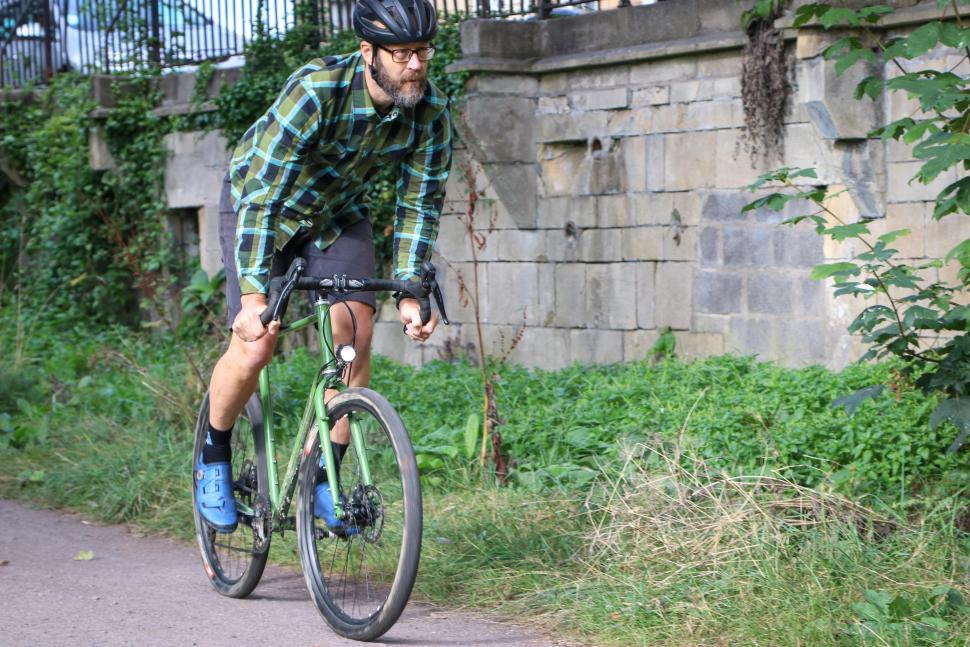
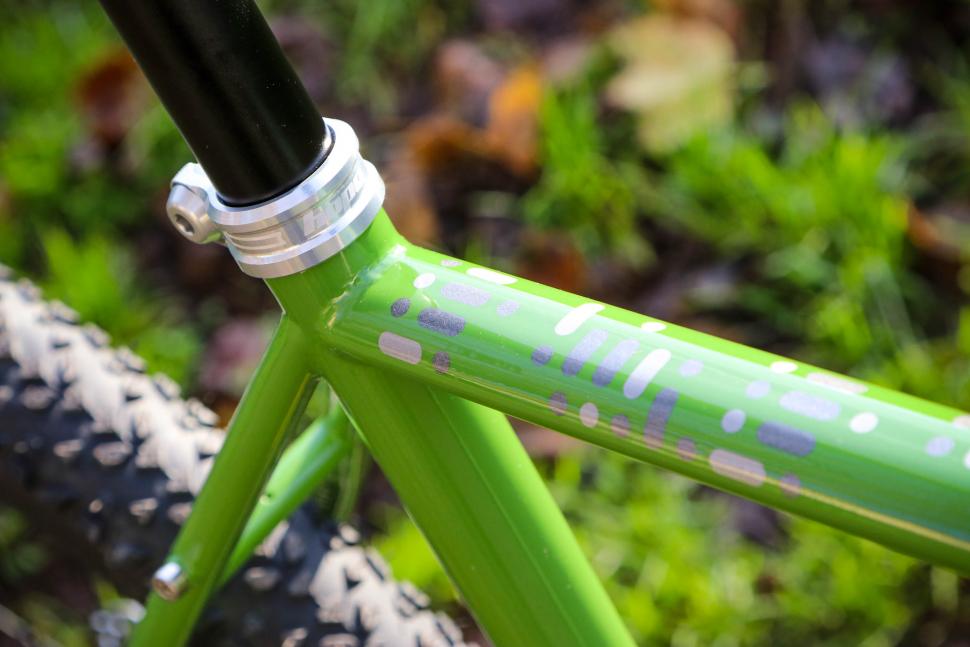
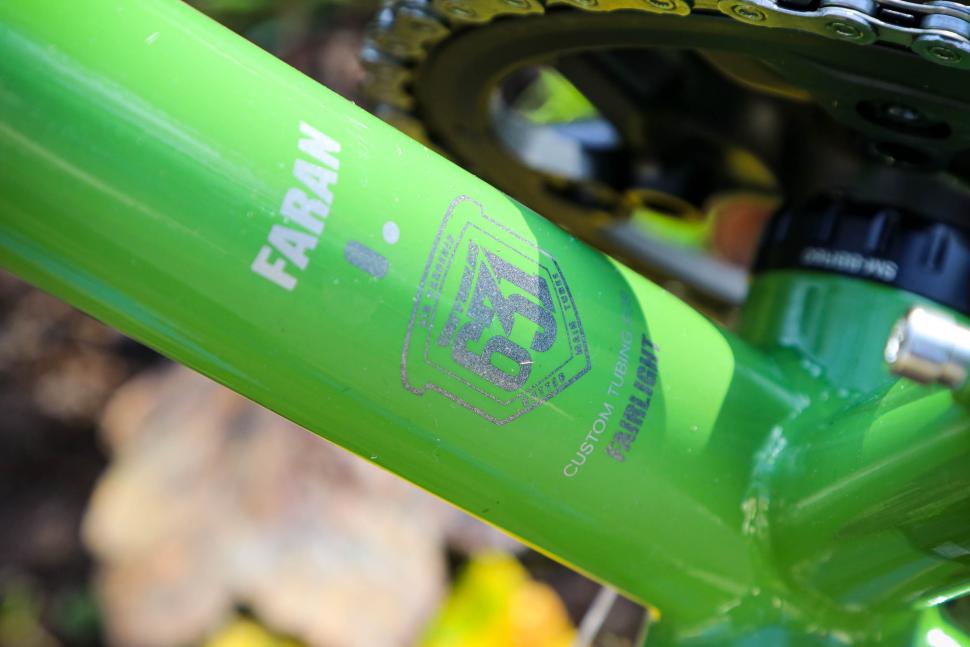
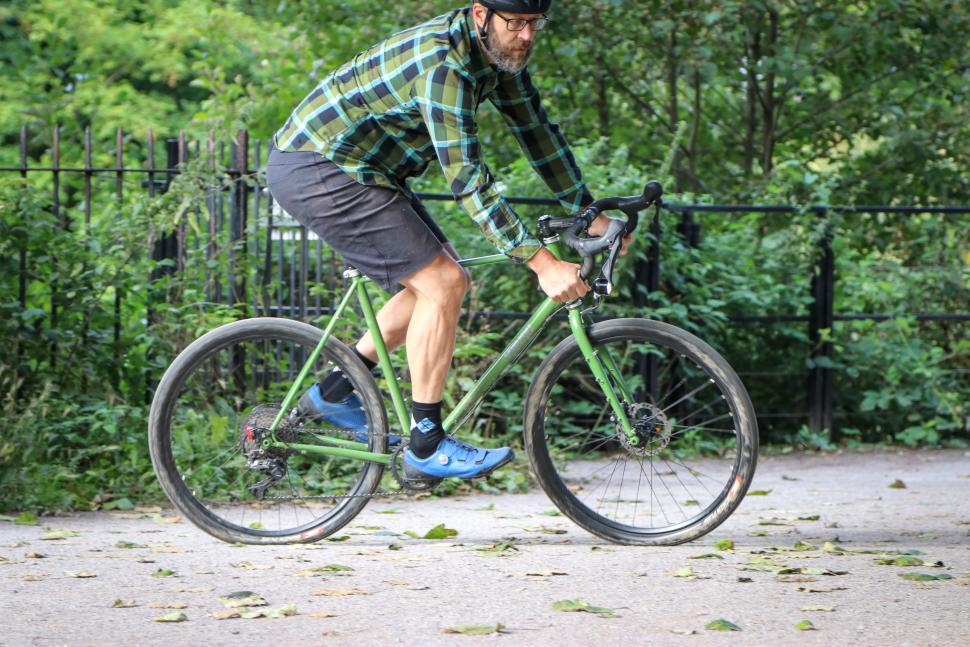
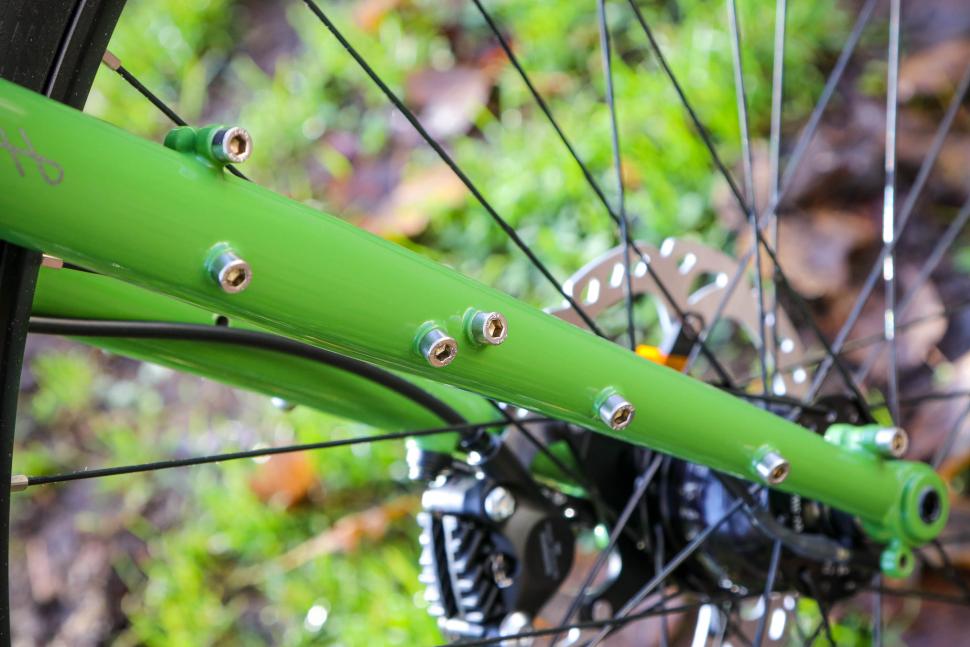

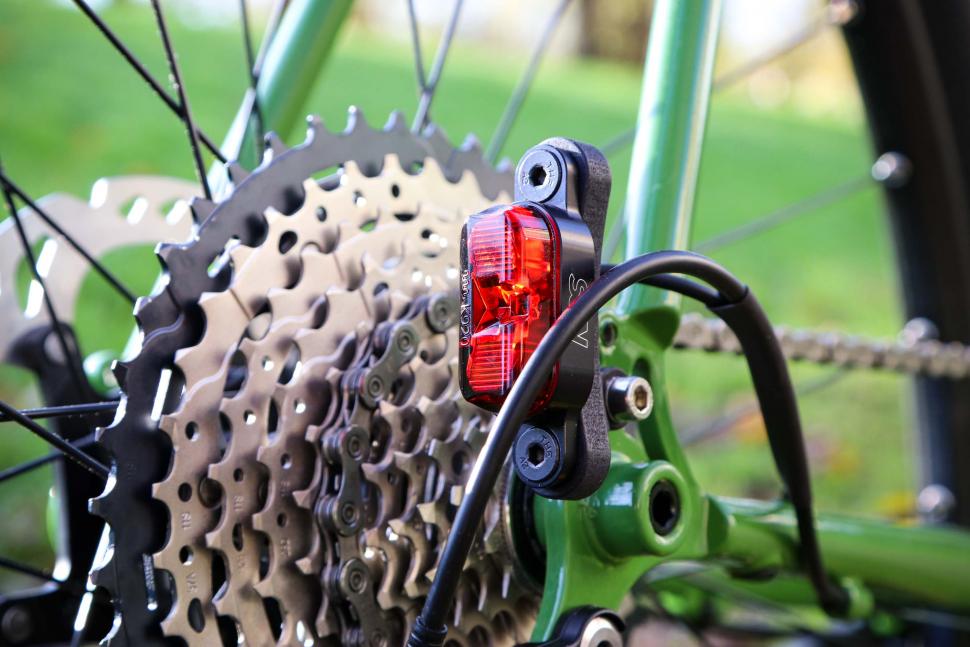
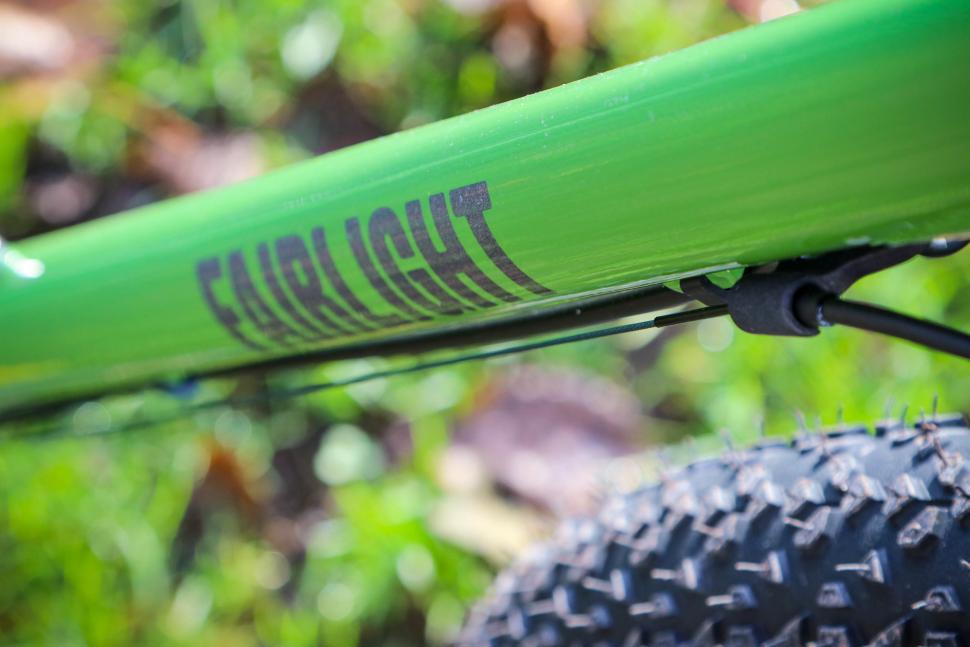

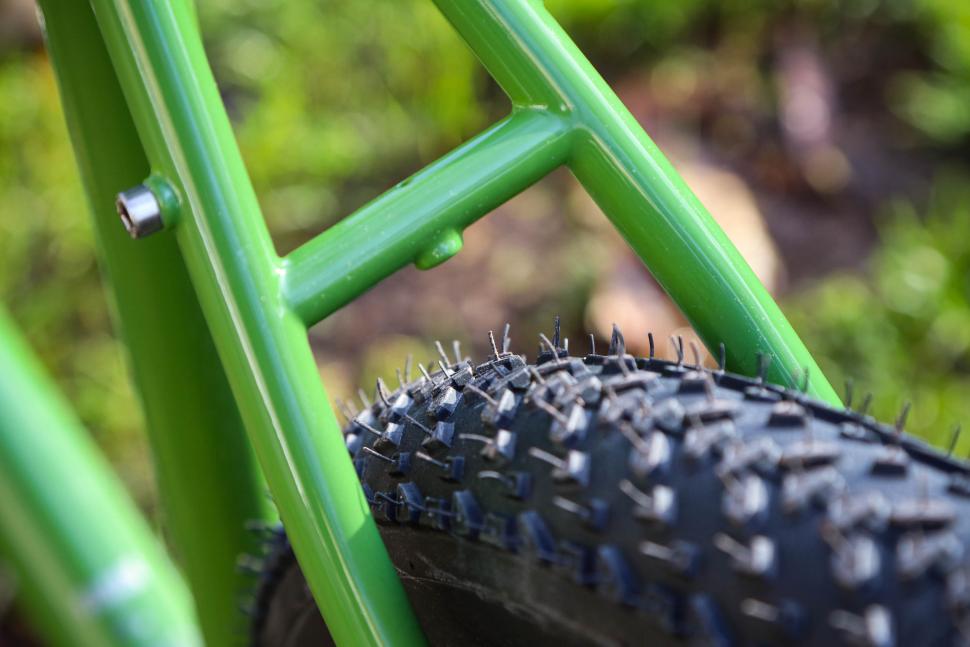
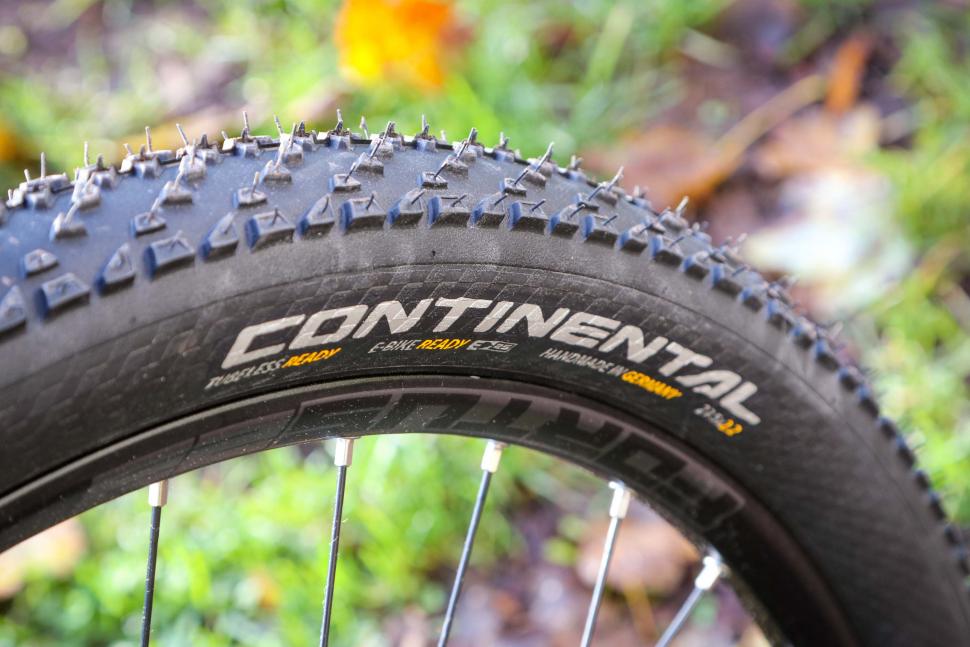

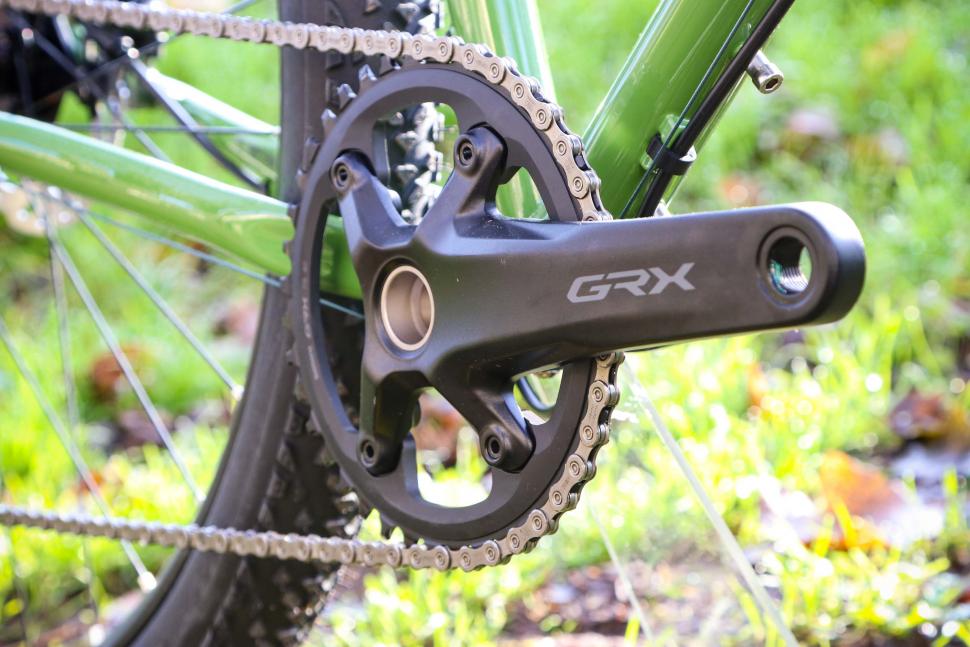


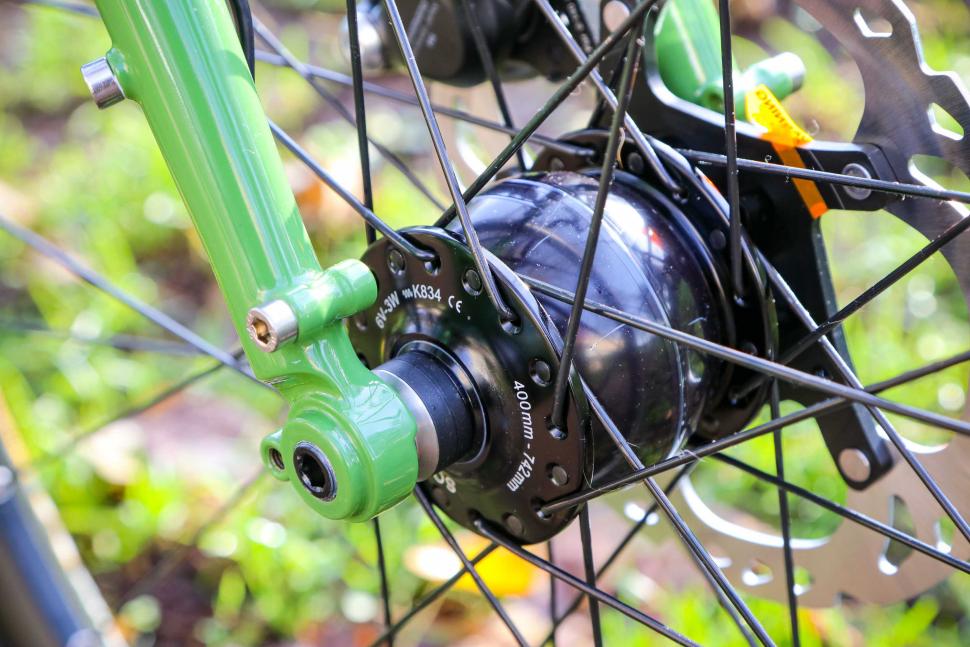
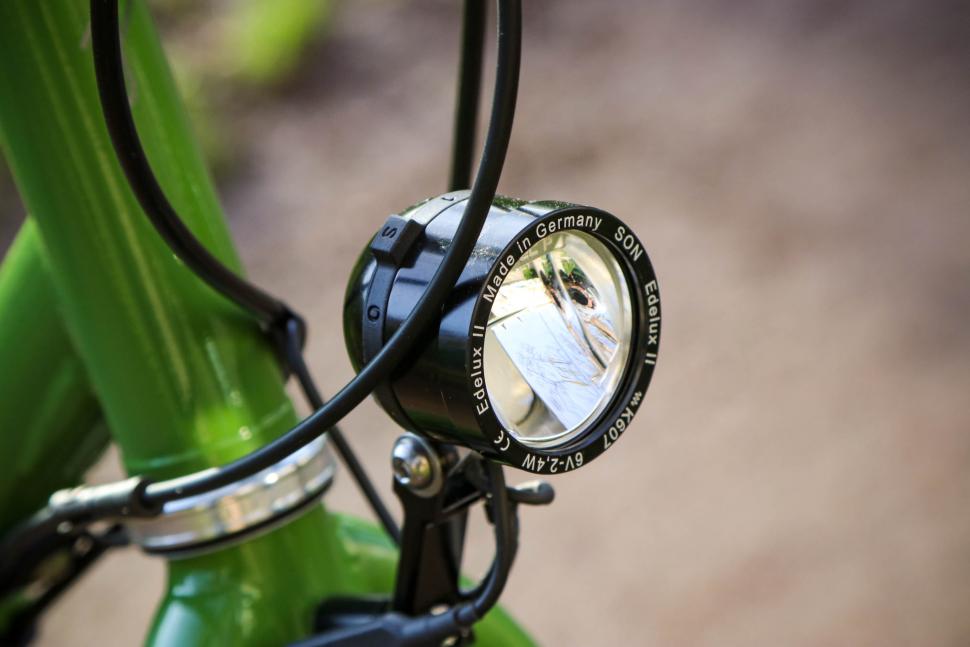



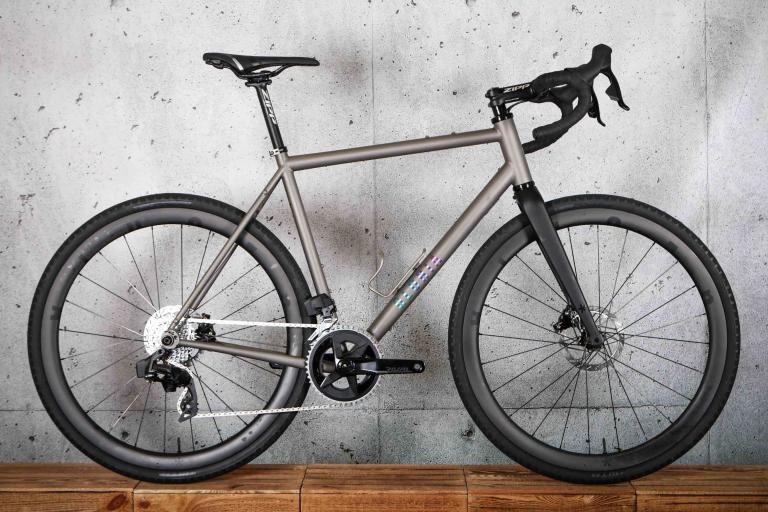
Add new comment
7 comments
Another "touring" bike with an inadequate gear range for climbing hills with 30kgs of touring gear on the bike. It's generally accepted that a "granny" gear of about 18" or less is needed for touring. This set-up is nowhere near that. My granny gets 15" before I have to use the 2 foot gear when climbing 7-8% hills. Not everyone has, or feels the need for, legs of steel to go "touring".
You can build it how you want though. Tiagra triple or Deore XT with bar end shifters would get the gear needed. You can run a 30/51T low gear with Deore 1x
You can buy the frameset and build it how you want which is how many Fairlight customers do things. I built a Secan and it was a very easy bike to build up.
Also having toured myself, my kit was nowhere near 30kg.
Joe, your type of touring may be different to mine enabling you to travel light. In Australia, bike shops where I tour could be 100-200kms away, similarly with accommodation, food and water, so spares, tools, supplies and water need to be carried to enable me to accommodate these vagaries. I wish that I could travel lighter but repeated reviews of my packing list yields very little change!
BTW, I built-up my Lynskey Backroad tourer, including the wheels, 8 years ago. It's a lovely bike to ride, both loaded and unloaded! It was a feeling of great achievement being able to ride the thousands of kms on tours that I have and will do on the bike I built myself. The onset of galloping old age has put an end to activities that require a steady hand.
I suspect that's partly the result of market forces more than anything else - would it be cost effective for Farlight to offer triple chainsets if very few people purchase them?
It probably also reflects that this isn't a "touring" bike - it's a "touring, audax, randonneuring, utility and all-purpose bike". It's a versatile frame that can be used for many different things, but that does mean some compromises have to be made at the extremes. The review even mentions it's not a "dedicated world tourer".
if i was building it up for touring i'd probably go with a 38/28 mtb double to be honest. that'd give you your 18" bottom gear with the 11-42 and a top of about 92" which is plenty for kind of speeds i'd be doing touring.
i wasn't building it up for touring though, i was building it up for bikepacking, which is a bit different. but you could use whatever you wanted.
I loved my Mk1 Faran and if I was still commuting this would be the perfect bike for schlepping across the New Forest before hitting Southampton's bike network. The key to the Mk1 was versatility, it did everything I threw at it reasonably well, even singletrack running an ultra-compact double.